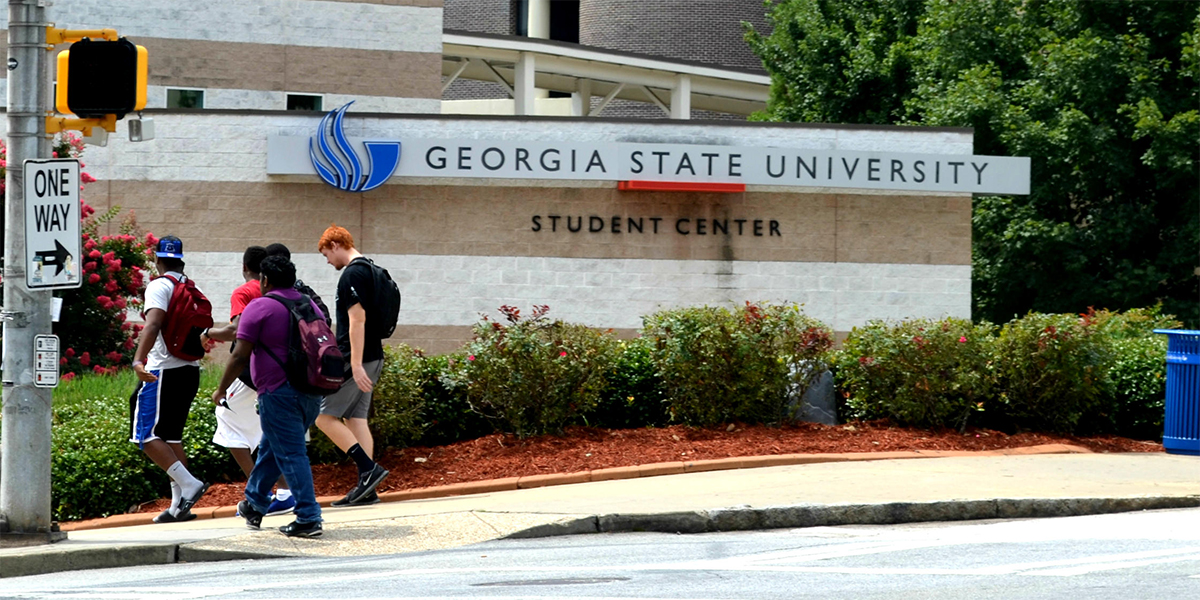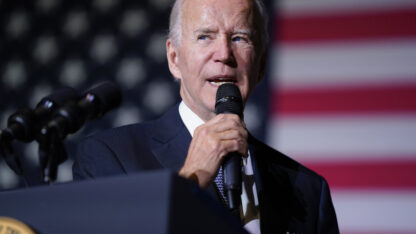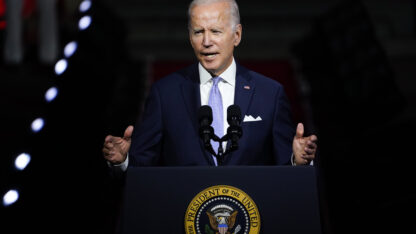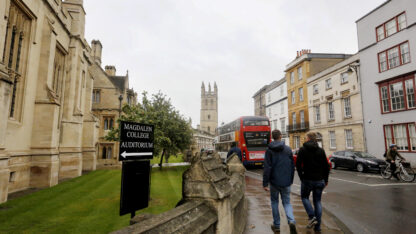Enrollment dips for second year at Georgia universities

Georgia State University remained the system’s largest school, with nearly 52,000 students, despite having 0.6% fewer students.
Catherine Mullins / WABE
The number of students fell for a second straight year at Georgia’s public colleges and universities, even as the state’s most prestigious universities kept growing.
While Georgia’s universities had outperformed the nation in enrollment for years, numbers dipped more sharply this year, falling 1.8%, compared to 1.1% fewer students nationwide tracked by the National Student Clearinghouse.
Angela Bell, the vice chancellor of research and policy analysis, attributed the decrease to several factors, including people passing up school for jobs, a smaller number of graduating high school students, and poorer academic achievement as a result of the COVID-19 pandemic.
“The USG has experienced better enrollment outcomes than the country as whole over the past few years, even though this fall the comparison is a little mixed,” Bell told regents.
The system enrolled 334,000 students overall across its 26 institutions, down from 340,000 last fall and an all-time high of 341,000 in fall 2020.
Chancellor Sonny Perdue said the declines cause “some challenges.” He said that system officials are examining “what can we do to mitigate the demographic challenges, the workplace challenges” to attract more students, including adults. He said enrollment is likely to improve if the economy declines.
“These challenges aren’t unique to us, it’s national,” Perdue said. “But I don’t take the excuse that just because everyone else is affected by it we are too.”
The number of graduating high school seniors is likely to fall for years beginning later in the decade, because of a decline in birthrates.
He said that the system may be looking at controlling costs in the 2024 budget that will begin in the middle of next year.
“When you don’t have as much sales, you’re going to have fewer people, and we’re aligning that to the budgets of ’24 in that regard,” Perdue said.
Eight schools saw increases, 17 saw decreases, and Dalton State College had flat enrollment.
The fastest growing school, both in raw numbers and percentage terms was Georgia Tech, which added 3.3% more students, crossing the 45,000 mark. Two other universities in the top research tier also grew — the University of Georgia and Augusta University. Georgia State University remained the system’s largest, with nearly 52,000 students, despite having 0.6% fewer students.
That continued the trend of top-tier schools thriving while enrollment shrank elsewhere. Enrollment at second-tier comprehensive universities fell 3.7% overall, while the number of students at third-tier state universities fell 5.7%. Fourth-tier state colleges, where many students are seeking two-year degrees, stabilized somewhat after sharp drops in previous years, falling 2.4%.
Enrollment fell most sharply at Clayton State University, dipping 14.1%. Other schools that saw double-digit declines included Savannah State University, down 12.1%; Valdosta State University, down 11.6%; and Atlanta Metropolitan State College, down 10.7%.
Enrollment fell in all four undergraduate years, as well as among high school students who were dual-enrolled in college courses. Graduate enrollment bucked the state and national trends, rising 0.2%, but Bell said graduate enrollment appeared to be plateauing after booming during the pandemic. Much of the increase at Georgia Tech and in graduate enrollment overall has been driven by rapid expansion of online master’s degrees offered to professionals by Georgia Tech.
The share of white students in the system continues to fall, down to 44% this year, with the share of Hispanic and Asian students rising. The share of Black students has remained level.








